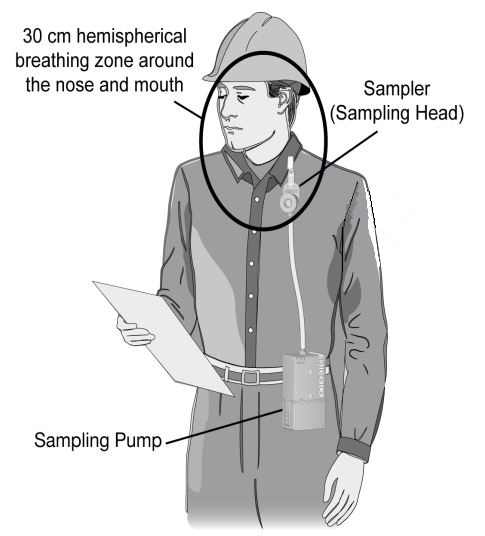Air Quality Sampling – All you need to know
What is Air Sampling (Air Testing)?
Simply put, air testing refers to the process of collecting air from an environment, and analysing the sample to look for presence of a given particulate. This is usually a contaminant such as Total Inhalable Dust or traces of a specific metal. It may also be a fume given off by a product. One common example would be in cleaning agents. The pollutants will always be listed in the Material Safety Data Sheet provided by the supplier.
Why do I need to do it?
The Health and Safety Executive (HSE) estimate that 12,000 lung disease deaths each year are linked to past exposures at work, not forgetting the 1.4 million workers currently suffering from work-related ill health. As an employer, you have a responsibility to ensure your employees are working in a safe environment, and not contributing to these unacceptable numbers. Legally you must have an LEV test on your extraction system, but the examiner may feel that Air Samples are also required to confirm the environment is safe to work in. They may also be taken prior to installing an extraction system to establish the requirements.

How are samples collected?
There are two main air sample methods: personal and static. These methods use air sampling equipment, which our P601 accredited LEV engineers will set up. Pre-weighed filters are attached to a small, powerful air pump in both cases. Personal air sampling involves an operative wearing the pump and filter around their breathing zone, whereas static air sampling involves the pump being left in a specific risk area. It is then run for a number of hours to replicate human breathing. Any pollutants would be collected on the filter, which is then sent to an independent laboratory for analysis.
Which type of Air Sampling do I need?
This depends a lot on your average day. Personal Air Samples would be needed if you believe a specific job role within your business could be at risk of overexposure to dangerous particulates. However, if the risk area is likely to have passing foot traffic, you should opt for a Static Air Sample. This is usually because an operator can be wearing RPE while working, but other people are also in the area (even if only momentarily) completely unprotected.
What happens next?
The filter media will be analysed by the lab, and they will send their results to us. We will use this raw data to generate a personalised report for you. This shows a brief summary of the nature of the works on site, as well as the findings expressed as an 8-hour Time Weighted Average (TWA). If the readings are above the Workplace Exposure Limit (WEL) listed in the HSE publication EH40/2005, we will guide you through the options to reduce this and keep your workplace legal.
How much do Air Samples cost?
Every situation is different, but Ducting Express are on hand to help! To get a personalised, affordable quotation, contact us! We have a dedicated team of experienced Dust and Fume specialists more than happy to answer any questions you have on Air Quality Sampling.